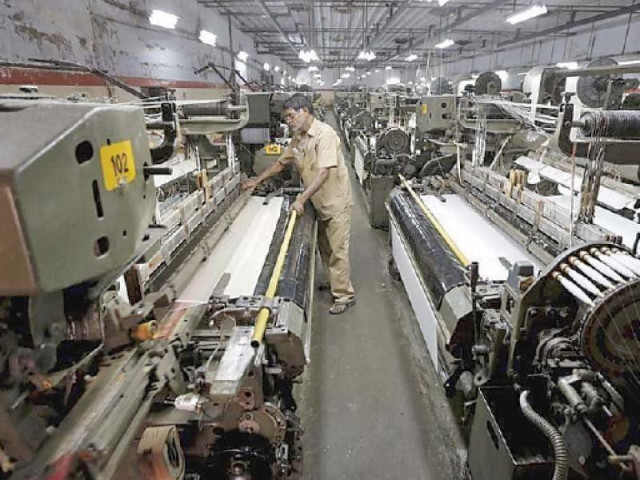Large industries grow 10.7%
Growth momentum may slow down next year as production cost swells

The large-scale manufacturing sector grew 10.7% in the first 10 months of current fiscal year – a momentum that may be lost in the next fiscal year due to the increasing cost of production and the policy to slow down the economy.
The Pakistan Bureau of Statistics (PBS) on Thursday released the data but did not give the breakdown of three main sources of LSM data, further compromising transparency.
Fingers have already been pointed at the PBS that in recent weeks has allegedly manipulated the inflation figures by reporting the wheat flour price at Rs980 per 20 kg across Punjab.
PBS stated that the sugar, cigarette, textile and chemical sectors contributed positively to the LSM sector, which kept growth in double digits.
The annual increase in LSM was recorded at 15.4% in April over a year ago, as a low base impact also helped in keeping the growth rate high. However, on a month-on-month basis, the growth rate slumped 13.3% in April over the preceding month.
The coalition government has decided to revive the stalled International Monetary Fund (IMF) programme and has announced plans to implement tight fiscal and monetary policies.
Excluding the expenditure on interest payments and defence, the government has either allowed a nominal increase or cut the expenditure in many areas for the next fiscal year.
The Pakistan Business Council (PBC) on Thursday suggested to the central bank to avoid a further increase in interest rate, arguing that the higher fuel cost and devaluation of the rupee was sufficient to dampen demand.
The higher fuel cost and devaluation of the rupee would have a significant demand dampening effect. Therefore, “further increase in policy rate is unnecessary,” said the PBC in a tweet.
It added that higher rates would cause the risk of loan impairment, besides raising the government’s debt servicing cost.
Banks still expect the central bank to raise the interest rate in the next month’s monetary policy announcement. They gave the government Rs732 billion in the T-bills auction for a three-month period at a rate of 15.25% compared to the policy rate of 13.75%.
The cut-off yield on three-month treasury bills remained unchanged at 15.25% and banks gave Rs732 billion in loans for three months against the government’s target of Rs250 billion. But they showed little interest in six-month and one-year treasury papers.
The federal government has estimated a budget deficit of Rs4.6 trillion in the next fiscal year, which appears to be on the lower side and there are chances of slippages.
After the ban on borrowing from the central bank, the government is now heavily dependent on commercial banks to remain afloat.
The previous government had targeted 4.8% economic growth for the current fiscal year while the provisional results showed that the growth stood higher at 6% - an outcome of expansionary fiscal and monetary policies.
PBS omitted details of the three main sources of LSM data collection. Earlier, it used to give a bifurcated summary of the data collected by the Oil Companies Advisory Council (OCAC), Ministry of Industries and provincial Bureaus of Statistics. This table is now missing from the summary.
Chief Statistician Dr Naeemul Zafar was not available for comments.
The industries that posted growth in the first 10 months (July-April) of the current fiscal year included textile, which registered a 3.7% expansion in the index. Textile is the largest sector in the LSM index, having 18.2% weight.
The production of apparel wear increased 41% while the output of food industry rose 11% during the period under review. Beverages sector’s production grew marginally by 1.5%.
Coke and petroleum products’ output grew over 1% while the chemicals’ output rose 8.3%, according to the national data collecting agency.
The output of the automobile sector increased 48% while the iron and steel sector saw a growth of 16.3%. The manufacturing of leather products rose 1.6%.
The paper and board sector grew 8.2% and the production of wood products expanded 135% but their weight is very low in the overall index, having little impact on the growth rate.
Three sectors remained in the red during the July-April period. These were rubber products whose output decreased 19%, transport equipment which shrank 11% and minerals which contracted slightly during the current fiscal year.
Published in The Express Tribune, June 17th, 2022.
Like Business on Facebook, follow @TribuneBiz on Twitter to stay informed and join in the conversation.




1735506669-0/image-(16)1735506669-0-208x130.webp)














COMMENTS
Comments are moderated and generally will be posted if they are on-topic and not abusive.
For more information, please see our Comments FAQ